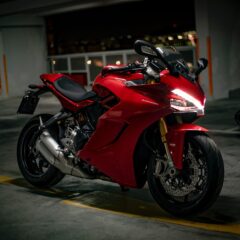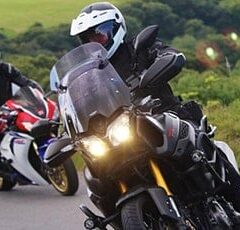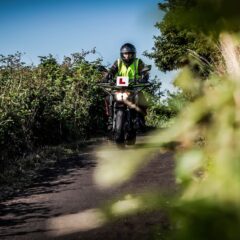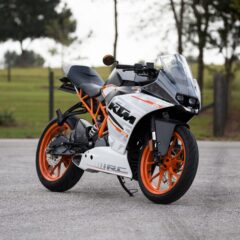
7 Top Motorcycle Accessories
With Christmas just around the corner, you might be wondering what to get your favourite motorcycle enthusiast or even a little something for yoursel...
 Phoenix Motorcycle Training LTD
Phoenix Motorcycle Training LTD
 Phoenix Motorcycle Training LTD
Phoenix Motorcycle Training LTD

The rules for a motorcycle licence are different to car licencing rules. Improvements to safety and the introduction of age and power restrictions mean most riders need professional lessons before riding on UK roads. How many motorcycle lessons you’ll need depends on a couple of different factors. But whichever path you take, in our humble opinion, the different rules for riders makes motorcycling better than driving!
If you’re starting out as a new road user, the path to gaining your licence is fairly straightforward. On the other hand, if you’re jumping on a motorcycle or scooter after decades of driving a car, the rules are a little different. And if you’re moving from abroad and want to ride a motorcycle in the UK, it’s different again.
It can be enough to make your head spin! To straighten things out, this blog covers each route to getting a motorcycle licence. We’ve also included a broad estimate of how many lessons you’ll need. But remember that we’re all different and learn at different rates. There is no exact number of motorcycle lessons that will work for everyone.
If you’ve never held a licence to ride or drive, gaining your motorcycle licence is fairly simple. You’ll start off by applying for your provisional licence. There is no test to pass. You’ll need to be 15 years and 9 months old, or older. You’ll also need to be able to read a number plate from 20 metres away. After meeting these requirements, you’ll pay the licence fee and be sent your provisional licence within a week.
Once you have your provisional licence, you’ll need to get some motorcycle riding lessons. Compulsory basic training teaches you the skills you need to handle a low-powered motorcycle or scooter on the road. Once your motorcycle instructor is confident you’ve got the basics down, you’ll get a CBT certificate. This is otherwise known as a DL196. This lets you ride on public roads and continue to hone your skill. Most people can complete our CBT course in a day.
You can ride with your DL196 certificate for two years before it needs to be renewed. The earliest you’ll be able to take your full motorcycle licence test is on your 17th birthday. It’s a good idea to take additional motorcycle training before taking your licence test.
Because of age and power restrictions, 17-year-olds can only get an A1 licence. This licence restricts the size of the motorcycle or scooter to 125ccs.
Minimum Age | Licence Type | Size of training bike | Licence requirements | Size of bike you can ride after passing training |
16 | CBT | Up to 125cc | Provisional or full UK driving licence | Up to 125cc |
| 16+ | AM | 50cc | Compulsory Basic Training (CBT), theory test, practical test on an all-powered 2-wheeled moped. | 50cc |
| 17 to 19+ | A1 | 125cc | Compulsory Basic Training (CBT), theory test, practical test | 125cc |
| 19 to 24+ | A2 | 500cc | Theory and practical test (CBT must have already been obtained to complete these tests) or 2 years experience on an A1 motorbike and a practical test | 35Kw (approx. 550 – 600cc) |
| 24 + (or after holding an A2 licence for a minimum of 2 years) | A (full motorcycle licence) | 600 cc | CBT, theory and practical test at 24 years of age or older, or hold an A2 licence for a minimum of 2 years and pass a practical test at age 21 or older | Any sized bike |
Typically, new riders can gain their CBT certification within a day or two. Knowing how to ride a bicycle makes it easier to balance on a moped or low-powered motorcycle. After riding with a CBT, further training before taking your motorcycle licence test will help you pass on your first try. DAS training prepares you for the highest level licence for your age and takes around two weeks.
If you got your driver’s licence before 2001, the rules are a little different. You’ll be able to jump on a low-powered motorcycle or scooter without any lessons. This is known as “grandfather rights”. It means you only need to show your UK driver’s licence to prove you’re legally able to ride a motorcycle or moped up to 50ccs.
If you want to ride a more powerful machine than 50ccs, you’ll need to get your CBT certificate. That can usually be done in a day or two. After you have your CBT, DAS training is the fastest route to a full licence. Typically, DAS training takes around 3 -5 days.
If you’ve been riding a motorcycle abroad, the licencing rules for riding in the UK vary again. It depends on where you’re coming from too. The UK Government website has a tool to figure out what you’ll need to do to ride a motorcycle in the UK with a foreign licence.
Riders from the EU or the European Economic Area (EEA) with full motorcycle licences, can swap their licence for a UK one. If you’re only visiting, you can ride on your EU or EEA licence in the UK for up to 12 months. You may need to support your foreign licence with proof of your vehicle insurance.
If you’re coming from further away, there’s a little more paperwork involved. You’ll be able to ride with your foreign motorcycle licence in the UK for 12 months. If your licence is in a language other than English, or from a country that’s not recognised by the UK licencing system, you’ll need to get an International Driving Permit. You’ll need to carry this with your actual licence.
If you want to ride a motorcycle in the UK for more than the 12-month grace period, you’ll need to pass a test for your UK motorcycle licence. This ensures you’re familiar with UK road rules and are competent and capable in UK traffic conditions. Motorcycle training for foreign riders covers the same steps as UK drivers preparing for their motorcycle licence.
There is no one price for a motorcycle licence. This is because there are different elements to learning to ride and different levels of licences you can hold. The motorcycle licence cost depends on the journey you need to take for a UK licence.
A provisional licence, which lets you begin learning to ride or drive on the roads costs £34 if you apply online. It’s a little more expensive if you apply through the post office. CBT training costs around £160. The motorcycle licence theory test costs £23. This first test can be booked online and taken before any DAS training.
Full licence or DAS training varies in cost depending on where you train and also what the training course includes. Some schools charge separately for training, the bike you learn on, insurance, safety kit and petrol. Tests and booking fees are sorted out after the training.
Phoenix motorcycle training courses include everything you need to learn to ride and get your licence. That includes your test fees and we arrange your tests to be as close to your training as possible too.
It is possible to book your practical motorcycle tests directly with the DVSA. If you chose to do this, you’ll need to provide all the equipment needed for the test. Make sure the bike you intend to ride meets the motorcycle test rules. If it doesn’t you could end up being turned away without a refund.
Not all motorcycles are eligible for Mod 1 and Mod 2 practical tests. It’s also worth noting that you can book both elements of your motorcycle licence test at the same time. To take the second practical test you need to pass the first test. If you fail the first test, you need to wait three days before trying again.
Because of the complicated process of booking and taking your motorcycle licence test, we recommend going with a training school. By sorting out your motorcycle licence through a professional training school, you’ll avoid needing to rebook or being turned away with the wrong motorcycle. At Phoenix, we ensure you have the best possible circumstances for passing both tests the first time. That means you’re less likely to waste time and money on your motorcycle licence. Give us a call to chat about getting your motorcycle licence today!

With Christmas just around the corner, you might be wondering what to get your favourite motorcycle enthusiast or even a little something for yoursel...

If you love motorcycle riding, you’ve probably daydreamed about riding a motorbike for a living. A professional racer or stunt rider is OK for some...

Getting a UK motorcycle licence can seem a complicated process. Particularly when compared to a driving licence for a car. Whether you choose the pro...
This website uses cookies to personalise content, ads, and analyse traffic, sharing data with partners who may combine it with other information. See our Privacy Policy for more information.